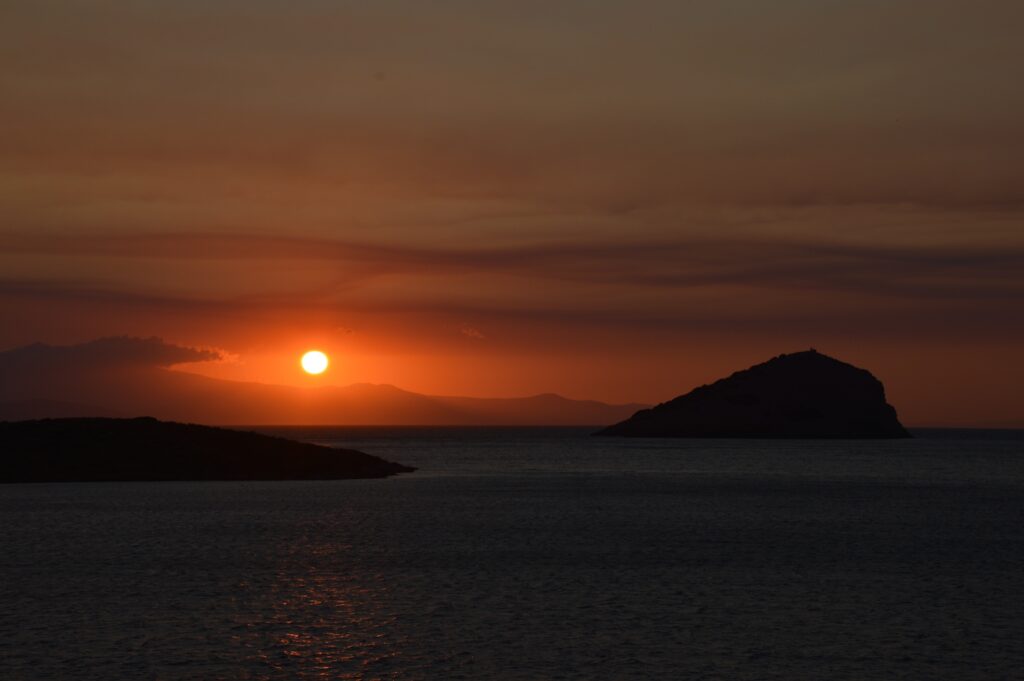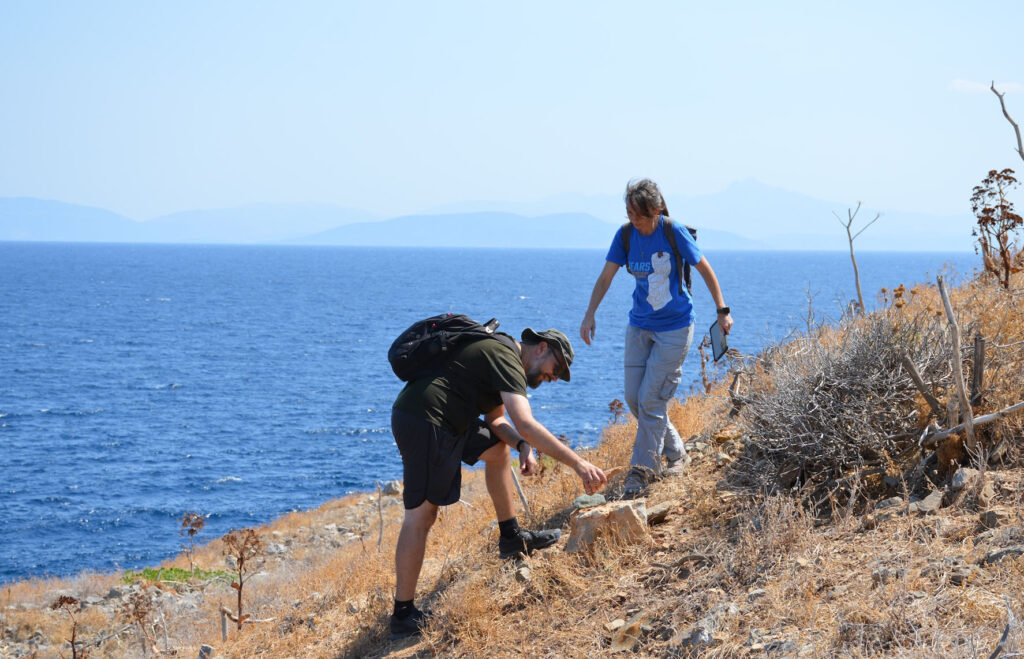
On Tuesday and Wednesday the BEARS project had a great visit with a geologist and expert on the sources of volcanic stones, Christos Stergiou. With Christos we are collaborating to conduct chemical and geological analysis of some of our stone finds, especially the volcanic and metamorphic materials used to manufacture the large assemblage of groundstone artifacts that we documented on Raftis Island. We reunited with our old friend captain Vasilis Miliotis and his son Odysseas for a trip out to Raftis to collect a few artifacts for sampling, and to show Christos the local geology of the island. It was a beautiful day at the office…and we learned a lot!

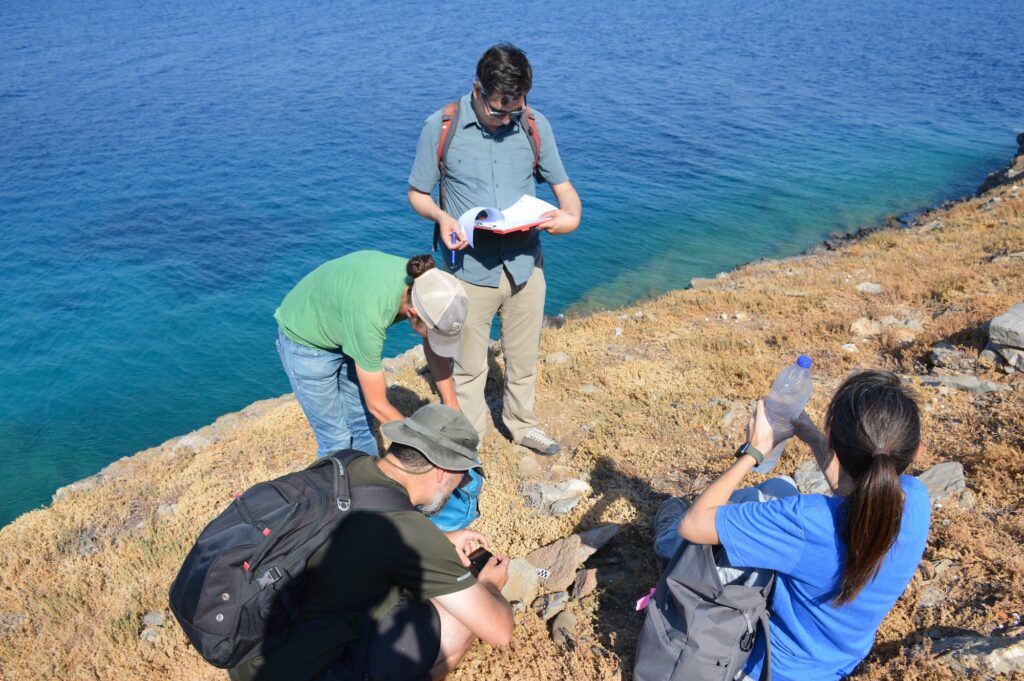
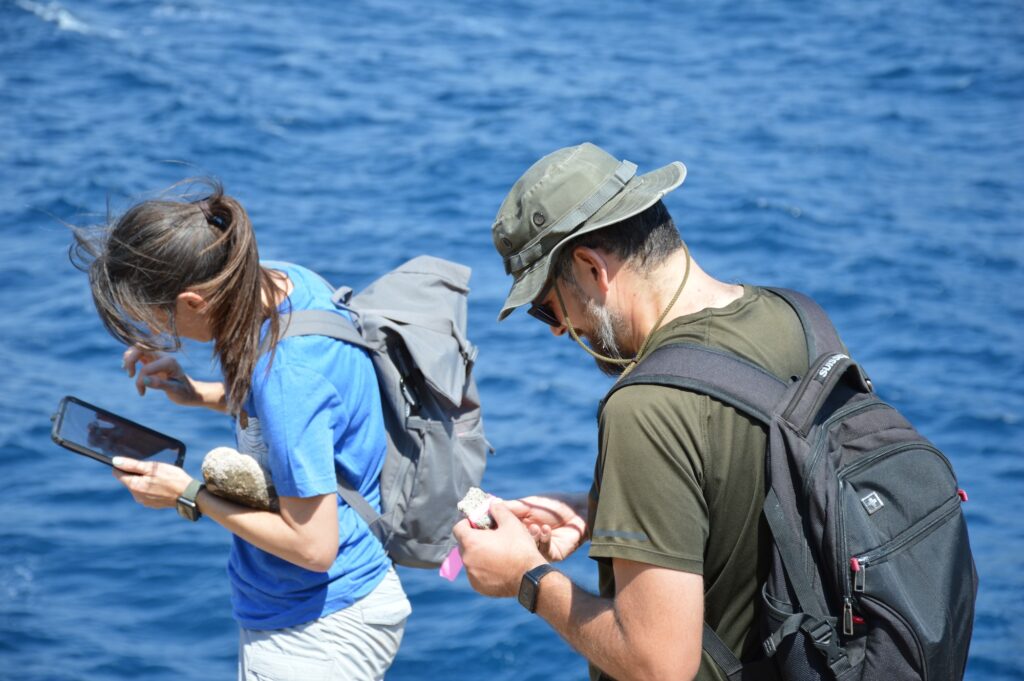

We also spent a day in the Brauron museum examining the finds that we collected in previous seasons, and learned a lot of exciting insights from Christos about the kaleidoscope of different stone types used by the Late Bronze Age community on Raftis. A fun fact: there is an iron oxide called Goethite that is named after Johann Wolfgang von Goethe, because he had a huge collection of it. I am sure you can see the resemblance.

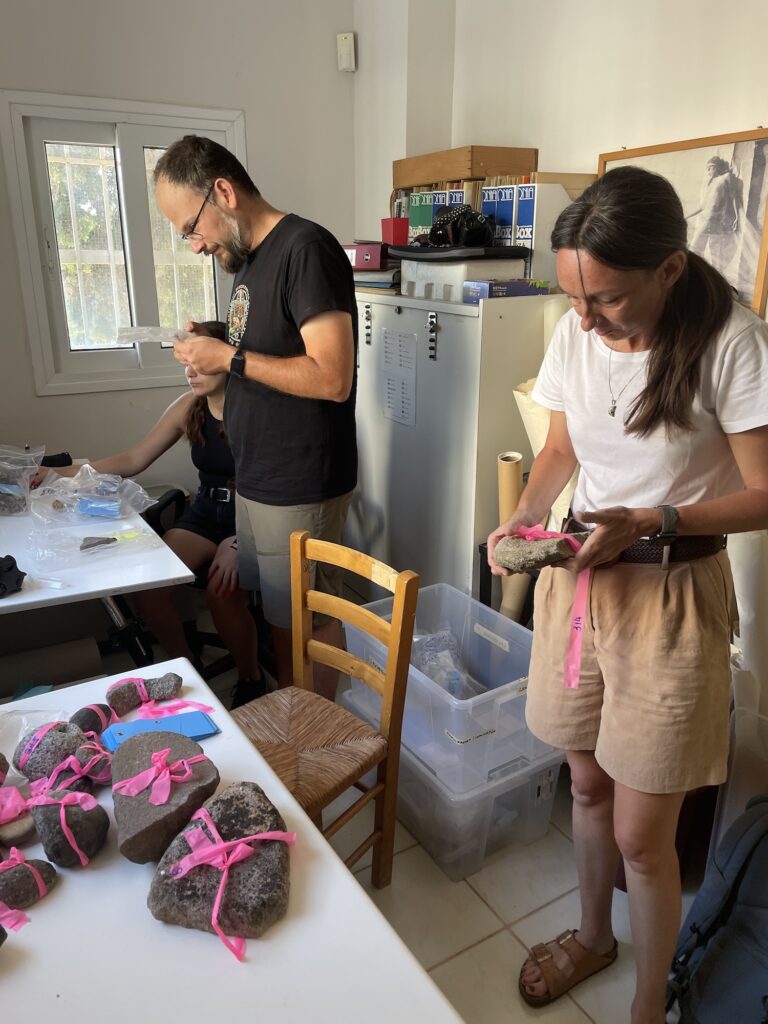
Another fun fact, discussed as we learned that one of our finds, a cube-shaped hematite handtool used for rubbing or polishing, perhaps reused after a former life as a weight, is made of very magnetic magnetite: the word magnet comes from the Greek, “magnitis lithos”, rocks from Magnesia, because the earliest known sources of the mineral were apparently identified in either the Thessalian or Lydian region of Magnesia. That there is some good cocktail party knowledge for ya blog readers.
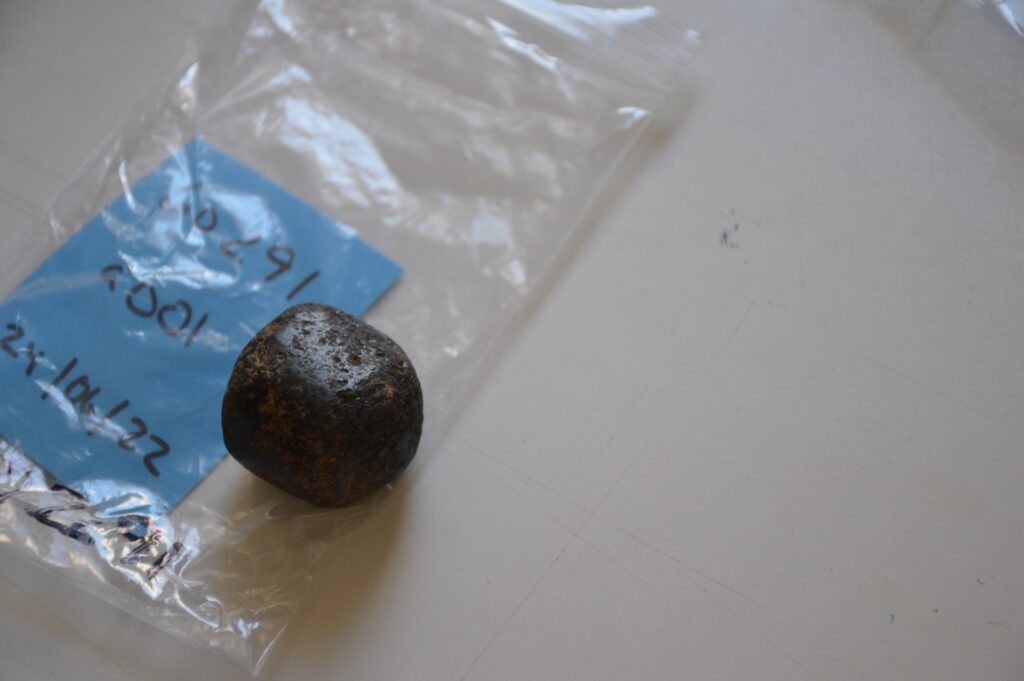
Now that we’ve done the preliminary macroscopic analysis, the next step is to apply for permission to conduct geochemical sampling and thin section analysis of a list of artifacts that we put together in the museum. If all goes according to plan, by this time next year we will have a much better understanding of the distribution of source materials that the people on Raftis were exploiting for their grinding and pounding needs.
